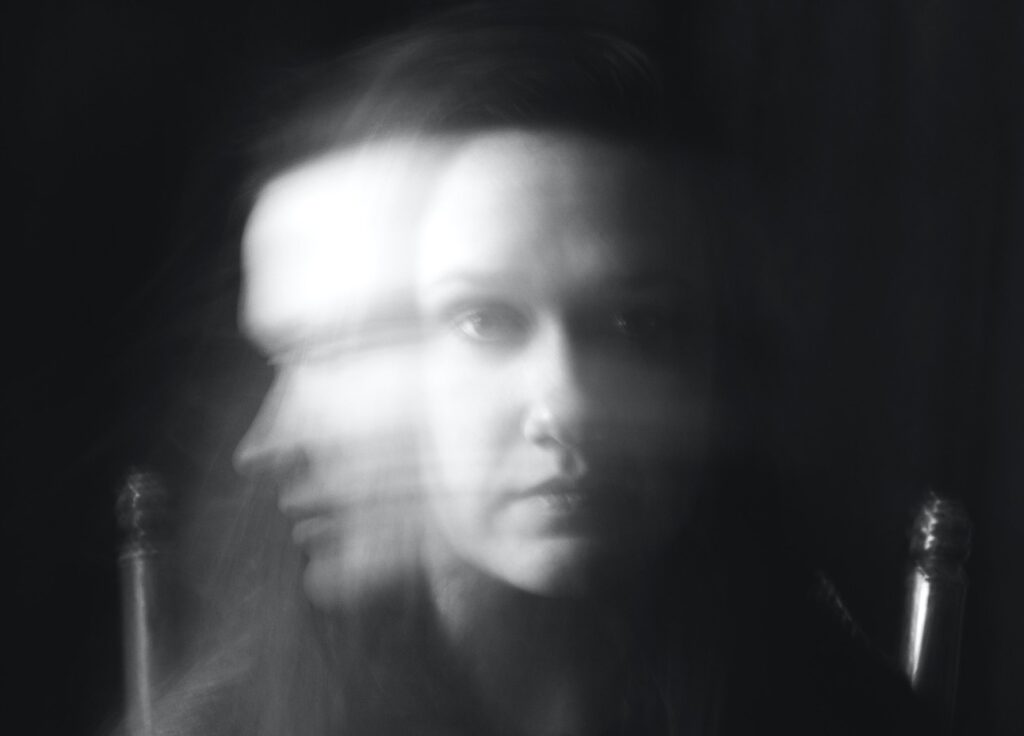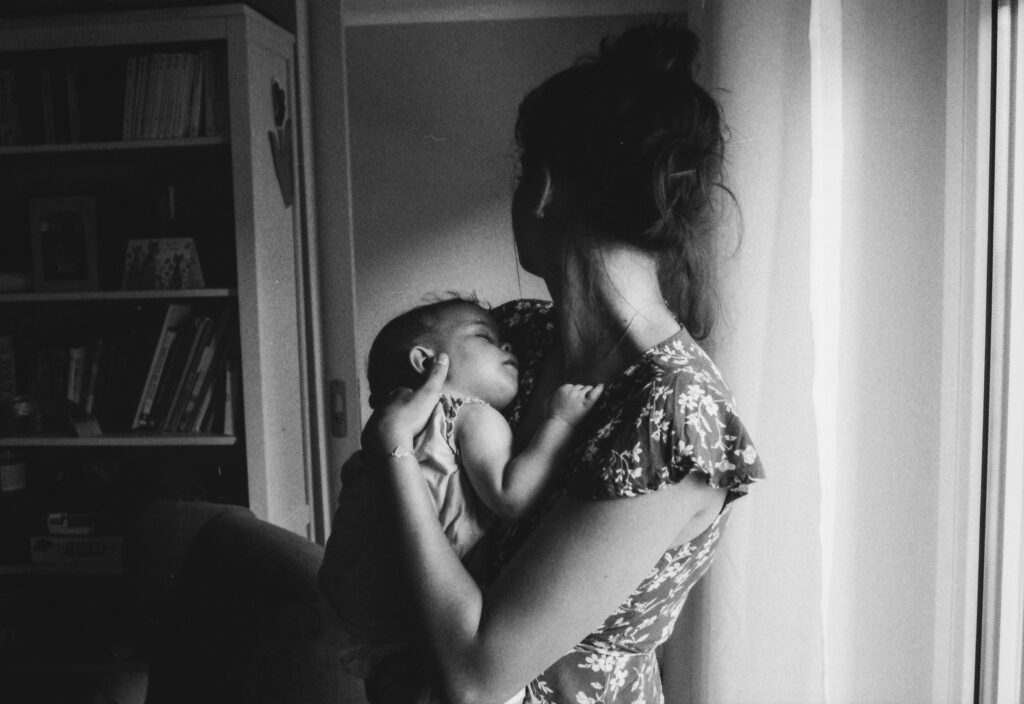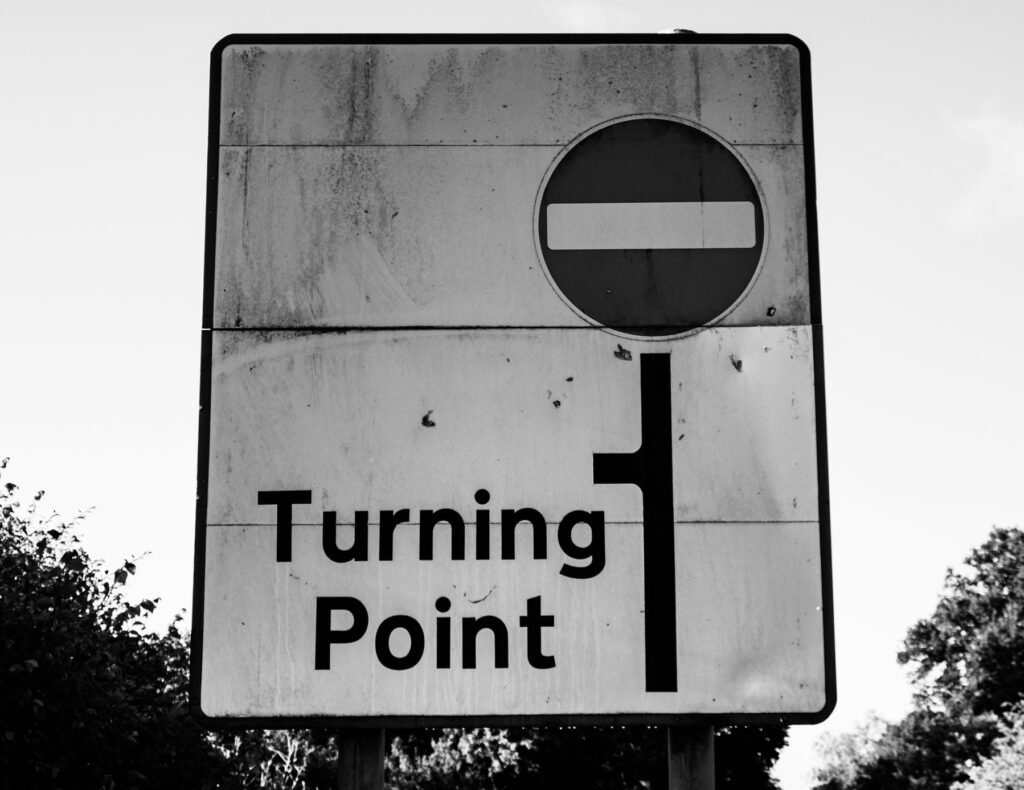This blog post explores the dark psychosomatic history of schizophrenia. In the first decades after the Second World War, the dominant view in American psychiatry was that parents – mothers in particular – were responsible for causing schizophrenia in their children. The ‘schizophrenogenic’ mother was said to be domineering, covertly rejecting, and hostile. Her communication style was believed to be so contradictory that it drove her offspring into psychotic delusion. Parents of people with schizophrenia formed the National Alliance on Mental Illness (NAMI) to fight these harmful myths. They contended, successfully, that schizophrenia was a brain disease in need of biomedical research.

‘Arguably the worst disease affecting mankind’
Schizophrenia is a debilitating mental illness that strikes people in the prime of their lives. It often starts with social withdrawal and flattened emotions in young adults who had just begun to discover the world. Only the exceptionally talented such as the American mathematician John Nash or the Russian ballet dancer Vaslav Nijinsky were able to make their mark at a young age before the illness disrupted their life.
People with schizophrenia suffer from hallucinations such as hearing voices or seeing things that are not there. Some have the feeling that others can hear their thoughts. Even more frightening are the delusions. In a popular testimony on YouTube, one patient explains how she became obsessed that doctors were conspiring to kill her by poisoning her medications, a delusion that unfortunately is not uncommon in schizophrenia. There is a reason why Nature once described it as “arguably the worst disease affecting mankind.”
Contrary to popular thought there are effective treatments for schizophrenia and the prognosis is not that gloomy. An old adage states that one-third of first-episode cases recovers, a third remains ill but can function while another third has a chronic course that requires continuous care.
Ice picks and insulin overdoses
To understand why health professionals once believed that bad parenting caused schizophrenia we have to go back to the era before the schizophrenogenic mother entered the scientific literature. At the end of the 19th and early 20th century, a biomedical view of schizophrenia prevailed. The illness was frequently referred to by its old name ‘dementia praecox’ and patients were thought to suffer from an organic disturbance of the brain.
Unfortunately, scientific thinking of the time was contaminated by eugenics and racism. Patients were studied as biological specimens rather than as persons. They were seen as degenerates who invoked scientific curiosity instead of empathy. Some doctors and researchers were more interested in biochemistry and classification than in supporting patients in their struggle.
Treatment approaches were aggressive with little concern for the patient perspective. Some doctors thought it was a good idea to hammer an ice pick through the eye socket and damage the prefrontal lobes. Others gave overdoses of insulin to shock patients into a diabetic coma. Then there was the focal infection theory, the idea that hidden bacterial infections were the underlying cause of psychosis. Some surgeons took out teeth, tonsils, colons, ovaries – just about every organ they could cut out – in the belief that this would clear the toxic cause of their patients’ mental illness.
Deciphering psychosis
Some psychiatrists were appalled by the lack of empathy toward schizophrenics. They wanted to help the patient, learn to understand his condition. Trained in Freudian psychoanalysis, they believed that the symptoms of schizophrenia were more than random madness and that they could decipher their hidden meaning.
Instead of emphasizing genetics, these psychoanalysts argued that schizophrenia could happen to anyone. They said psychotic symptoms provided insight into social circumstances and traumas of the past rather than patients’ physical constitution. In many ways, they were bold and radical. Freud, after all, considered schizophrenics a hopeless cause. “They become inaccessible to the influence of psychoanalysis and cannot be cured by our efforts” he stated. But this ambitious group of psychoanalysts were less pessimistic and considered themselves “more Freudian than Freud.”
They did everything they could to establish a close relationship with schizophrenic patients. The Swiss therapist Marguerite Sechehaye (1887-1964), for example, cared for her patients as if they were little children. She went as far as symbolically breastfeed a 20-year-old girl because she called for “Mama’s apples”. The most legendary among them was the German-born Frieda Fromm-Reichmann (1889-1957). Nothing could deter her from establishing a trust relationship with her schizophrenic patients. When a patient was masturbating in public, she simply sat beside him. One colleague recalled that Fromm-Reichmann would “sit in a patient’s urine with him to show there was no difference between them. Or a patient would give his feces as a gift, and she would take them.”

I never promised you a rose garden
Fromm-Reichmann worked at Chestnut Lodge in Rockville, Maryland. The private institution was known for shunning medication and providing prolonged talk therapy to patients with mental problems. At one time, there were as many as 20 therapists for 100 patients. Its ‘progressive’ approach attracted the rich and famous.
In 1964, a former resident called Joanne Greenberg published the novel ‘I never promised you a rose garden’ based on her experiences at Chestnut Lodge. The book was a bestseller. It was translated to multiple languages and turned into a film in 1977. It tells the story of a young girl named Deborah who was diagnosed with schizophrenia and frequently retreats into a psychotic fantasy world. Her therapist Dr. Fried – a personage based on Fromm-Reichmann – slowly gets through to Deborah and understands that the girl’s psychosis act as a defense against traumatic experiences. “Let me say that the symptoms are not the sickness,” Dr. Fried says in the novel. “These symptoms are defenses and shields.” The hidden world was for her “the means to stay alive in a world of anarchy and terror.” In the novel, Dr. Fried convinces Deborah to choose real life over her fantasy world.
Several experts, however, have deplored the popularity of the book because the description of Deborah’s symptoms and the success of her talk therapy does not match schizophrenia.
The schizophrenogenic mother
The story did fit the narrative that Fromm-Reichmann and her colleagues promoted. They argued that schizophrenia was not a disease, but a “self-imposed withdrawal”, a behavioral defense against painful life experiences. In their view, family circumstances were to blame for schizophrenia. In a famous paragraph Fromm-Reichman wrote:
“The schizophrenic is painfully distrustful and resentful of other people, due to the severe early warp and rejection he encountered in important people of his infancy and childhood, as a rule, mainly in a schizophrenogenic mother.”
With these words, the myth of the schizophrenogenic mother was born. In the next years, multiple scientific publications blamed the behavior or parenting style of mothers for causing schizophrenia in their children. One paper summarized that “the schizophrenic is always one who is reared by a woman who suffers from a perversion of the maternal instinct.”
In the scientific literature, the schizophrenogenic mother was described as hostile, covertly rejecting, fundamentally insecure, cold, psychosexually immature, domineering, overanxious, obsessive, perfectionistic, oversolicitous, overprotective, dogmatic, inconsistent, self-sacrificing, and many more things. Psychoanalysts seemed to agree that mothers were to blame but found it difficult to explain why. From the beginning, explanations contradicted each other.
One research group, for example, found that schizophrenogenic mothers had breastfed their children more (instead of less) than a control group. Rather than admit that this did not easily fit their hypothesis, the authors argued that breastfeeding demonstrated “a need to deny negative feelings towards the children.”
An influential paper described schizophrenogenic mothers as follows:
“They were always on time; always apologetic of taking so much of the doctor’s time; always profusely thanking at the end of the interview. They tried in every possible way to ingratiate themselves and to make the best possible impression on the doctor. They acted like ‘model patients’ […] Their attitude was: ‘You are the doctor and you know best.’”
Instead of thinking that these mothers were kind people, eager to collaborate with the doctor, and help their sick child, the author interpreted their behavior as hostile and domineering: “by their seeming surrender in what looked like a dependent relationship they dominated the situation in a subtle way.”
No matter what the mothers were doing, it was interpreted as causing schizophrenia.
The double bind: contradictory messages
The solution for contradictions in the literature was not to question the theory but to expand the blame from the mother to the entire family. One popular theory was called “double bind”. It was formulated by Gregory Bateson, an anthropologist who had no clinical experience with schizophrenic patients and their families. Bateson’s theory argued that schizophrenics grew up in families with a contradictory communication style that literally drove people mad.
As an example, he presented a mother who resents her child but cannot accept her rejection of him. She might say something like: “Go to bed, you’re very tired and I want you to get your sleep.” The literal meaning of her words suggests concern but the real reason behind them is a hostile feeling that she can no longer stand the sight of him. While she says nice things, the message is one of hostility. As Bateson and colleagues explain: “the child is placed in a position where he must not accurately interpret her communication if he is to maintain his relationship with her.” This was called the double bind, and it was believed that a person caught in it, would go on to develop schizophrenic symptoms.
The hypothesis sounded sophisticated because it pointed at a specific communication pattern rather than just a hostile or domineering mother. The main problem with the idea was that there was not a shred of empirical evidence to support it. Eventually, a study debunked the double bind theory by demonstrating that even those who coined it could not agree on what it meant.

Theodore Lidz: skewed and schismatic families
Another popular theory came from Theodore Lidz a psychiatrist at Johns Hopkins University who later became Sterling Professor of Psychiatry at Yale University.
Lidz classified families of schizophrenics into two groups: skewed or schismatic. In skewed families there is one parent, often the mother, who domineers the household. In schismatic families, the fathers are as disturbed and pathological as the mothers, and both form rivaling factions. Often one of the parents uses the child to complete his or her own life.
Lidz was an authority who wrote chapters in textbooks and appeared in newspapers but what he said was far from nuanced. “There has never been a schizophrenic who came from a stable family”, he wrote. In his view, the family was always disturbed. “Though it is hazardous to say ‘always,’” he wrote in a book chapter, “I know no reason not to do so. Those who disagree with the ‘always’ have not studied the patients’ families intensively.” In a 1971 interview, he explained that even short contacts with these disturbed families were problematic: “we have had medical students observe family therapy sessions, and their response has been “my God, I couldn’t live in that family for a week, there is something so malignant.”
Direct analysis
The most problematic episode of the psychosomatic approach to schizophrenia didn’t come from Fromm-Reichmann, Bateson, or Lidz but a psychiatrist named John Nathaniel Rosen. Rosen had created a new approach to treat schizophrenia which he called ‘direct analysis’. With this method, the analyst inserts himself in the delusions of the patient by acting as an omnipotent protector. The therapist would, for example, assume the identity of the person who appears to be threatening the patient and then reassure the latter that, far from threatening him, they would love and protect him. In his 1953 book, Rosen explains that the therapist must be the idealized mother who has the responsibility of bringing the patient up all over again.
“You become the patient’s parent and the patient becomes your child. The patient is re-living the infantile period, and you are afforded the opportunity of bringing him up all over again.”
In other words, if a schizophrenogenic mother was the problem, then a benevolent and protective mother figure would be the antidote.
As one might have guessed, the idea to manipulate a delusional person by assuming the role of an all-powerful protector ended in horrendous abuse of power. One patient, for example, feared that he would be cut up into little pieces and fed to the tigers and Rosen responded as follows:
“When I could stand no more of this, I walked into his room with a big knife, saying, ‘All right, if you’re so anxious to be cut up, I’ll cut you up.’”
Another patient carried a pillow around and acted like it was her son. Rosen grabbed the pillow and banged it on the floor saying: “See, that can’t be a baby. I threw it on the floor with all my might and it didn’t cry.”
Rosen published these examples in his book, probably proud of his directness and boldness. His colleagues, who discussed his method, saw no ethical problems with it. Even when Rosen wrote:
“Sometimes, when I have the patient pinned to the floor, I say, ‘I can castrate you. I can kill you, I can eat you. I can do whatever I want to you, but I am not going to do it.’”
Rosen’s medical license would eventually be revoked after patients accused him of physical and sexual abuse, but this happened decades after he proposed his problematic therapy.

Antipsychotic drugs
Three factors contributed to the downfall of psychosomatic theories of schizophrenia. The first was the discovery of antipsychotic drugs in the 1950s. The second was strong evidence of a large genetic contribution to the illness. The third was advocacy organizations by patients and their families who started to challenge the harmful misconceptions spread about them.
Let us start with the new drug treatments. One person who played an important role in this development is the Belgian doctor and pharmacologist Paul Janssen. Being a Belgian, Janssen had an interest in professional cycling. He noticed that many racers became addicted to amphetamines and that long-term use could create symptoms almost indistinguishable from schizophrenia. This helped him to view the illness as a biomedical problem.
Within a few years, his small firm successfully developed Haldol, one of the most used antipsychotic medications until this day. In an interview with journalist Peter Wyden (whose son has schizophrenia), Janssen said that psychiatrists in Belgium and surrounding countries focused on Freudian psychotherapy and that they had difficulty accepting his new treatment. “It was a threat to their incomes,” he recalled, “and so they ridiculed the whole thing.”
The data is in, the experiment failed
Large studies would soon show that psychoanalysis was inferior to drug treatment, a finding that put pressure on institutions such as Chestnut Lodge to change course. A former therapist at the Lodge, Thomas McGlashan, recalled: “drugs were viewed as the enemy because they dulled the mind and inhibited feelings that were necessary to access in therapy.” McGlashan was given the assignment to collect data on the prognosis of schizophrenic patients at Chestnut Lodge. He had the support of Dexter Bullard, the owner of the hospital. In 1983 McGlashan presented his findings during a conference: “Frieda and Dexter embarked on a grand experiment” he said. “The data is in. The experiment failed.”
Wayne Fenton, a colleague of McGlashan’s at Chestnut Lodge, sketched the scenery of that dramatic moment:
“At the lodge, he stood up and, in essence, told all these giants of psychotherapy that there was not a shred of evidence that what they were doing with schizophrenia patients was helping, much less curing the disorder […] And the therapies were being advertised as cures.”
Bad genes, not bad mothers
Meanwhile, biomedical-oriented researchers of schizophrenia had made progress in showing that bad genes and not bad mothering played a large part in its etiology. It had always been known that schizophrenia runs in families. There was for example a famous case of the ‘Genain quadruplets’: 4 identical sisters who all developed schizophrenia in early adulthood (within 6 months of each other).
The problem was that such facts were not in contrast to psychosomatic theories. The father of the Genain quadruplets, for example, had reportedly physically abused his children while the mother fitted the stereotype of a domineering, schizophrenogenic mother quite well. There was no conclusive evidence that bad genes and not bad mothers, increased the risk of schizophrenia.
Two researchers at the National Institutes of Mental Health (NIMH), Seymour Ketty and David Rosenthal, found a solution to solve the deadlock. They used a large dataset on adopted children from Denmark. Children who were adopted had the genes of their biological parents but were raised from an early age by foster parents who were not blood-relatives. In other words, these adopted children formed the key to separate the effects of nurture and nature. At a 1967 conference on mental illness in Puerto Rico, Rosenthal and Ketty presented their findings. The results were clear. Genes were the culprit.

NAMI
The documentary ‘When Medicine Got it Wrong’ tells the story of NAMI, the national patient organization that played a significant role in countering psychosomatic falsehood about schizophrenia. It was founded in 1979 by two mothers who were tired of being blamed for their son’s mental illness. One of them was Eve Oliphant. In the documentary, she testifies how doctors used to look at patients with schizophrenia and their mothers.
“One time they had a group of patients and parents and they asked this one mother to go sit in the middle of the floor and the patient just sat with her and they said: ‘tell her, tell your mother how much you hate her.’”
It was common for doctors to advise a separation of schizophrenics and their families because the latter was believed to be part of the problem. Oliphant explains how she was viewed when she tried to visit her mentally ill son Brett:
“I went to see him and the man that opened the door, he said: ‘You have no right to be here. You know you caused this. You caused it.’”
Oliphant founded an advocacy organization that would challenge these misconceptions. She famously testified at the World Congress on Psychiatry in 1977:
“We failed to understand why parents of a child with leukemia were treated with sympathy and understanding, while parents of a child with schizophrenia were treated with scorn and condemnation. We began to wonder if there was not more wrong with the system than with us.”
Another important figure in the movement that advocated to view schizophrenia as an organic brain disorder was the psychiatrist and researcher Fuller Torrey. His sister had schizophrenia, so he quickly realized that what eminent psychoanalysts were saying about the illness was nonsense. He appeared on the Phil Donahue show demonstrating that people with schizophrenia had enlarged brain ventricles. Torrey also wrote the first popular handbook that summarized key facts about schizophrenia. In it, he wrote that:
“Psychoanalytic and family interaction theories […] attribute the cause to the behavior of the mother and father. As such they generate guilt and blame within the families. The magnitude of this guilt and blame is enormous and has led to depression, divorce, and even suicide. It has been iatrogenic anguish (physician-caused), wholly generated by the psychiatric profession. As doctors we are charged to ‘first do no harm’; purveyors of these theories have violated that basic tenet.”
Today schizophrenia is regarded as a brain disease and we have come a long way since the days that John Nash’s psychotic delusions were blamed on fetus envy. As we will explore in future blog posts, patient organizations in other illnesses are fighting for a similar transition.
An overview of all articles in this series can be found at the bottom of the introductory article.
In my opinion, the real problem is that schizophrenia is a social condition rather than a medical condition. These people certainly deserve help in the same way that child abuse victims deserve help. Child abuse is likely the reason why people find it easier to live life as a schizophrenic.
Something like autoimmune encephalitis is a condition with biomarkers (e.g. autoantibodies against NMDA receptor). Schizophrenia on the other hand doesn’t have biomarkers like genes, infectious disease, etc.
Those diagnosed with schizophrenia tend to suffer unethical abuse from the mental health system. Their normal rights are stripped away from them and they are bullied into treatments that they don’t want. Many of them will actively lie about taking their meds, which they don’t want to take. Doctors try to gaslight people into thinking that they have “anosognosia”. Many of them are misdiagnosed and clearly don’t have schizophrenia (e.g. the book Brain on Fire talks about autoimmune encephalitis misdiagnosed as schizophrenia and alcohol withdrawal). Unlike people with ME/CFS, schizophrenics don’t want medical help because they already know that they don’t have a medical problem. Their brain function is definitely there because their English language skills are perfect and they know how to do complicated tasks like driving, manipulating people, and murder.
Thanks for your comment but I disagree with it. I think that schizophrenia is a debilitating illness and that the view that it’s a social rather than medical condition is an unhelpful myth. It was once a popular argument among philosophers and social critics but I don’t think it had much credibility among doctors and experts who care for schizophrenic patients. I also think that a lot of patients with schizophrenia are helped with current medical care and medications rather than this resulting in unethical abuse.
I’ve met the schizophrenogenic mother, and this article is full of shit in many ways. The father is equally disturbed and abusive. Look up narcissistic family dynamics. Schizophrenia is not real and the brain disease propaganda is just NAMI mommies acting like victims like they’re on an estranged parents forum. It’s literally eugenics played out on social undesirables. The family scapegoat graduates to become a community scapegoat and psychiatry severely abuses them with full permission. Rosen’s ridiculous “therapy” which just describes abusing mental patients is a ridiculous straw man argument too. Seriously, these parents always have severe personality disorders and manufacture the perfect scapegoat to conceal all their family dysfunction. Neuroleptics also make it much much more difficult to recover, which is its own severe iatrogenic harm. The parents have usually been gaslighting their child into believing they are extremely defective from an extremely young age, often in response to abuse, like all narcissist parents tend to. Seriously, we can talk about Munchausen’s by proxy or we can talk about severe complex PTSD, but Schizophrenia is a bullshit fake Greek words that means very little and was named by a literal eugenicist.
So patient must the poorly diagnosed mothers of these unfortunate offspring!